Ever noticed how nobody tells you what to do if your heart throws a tantrum while you’re 38,000 feet in the air or hustling through a sunburned market in Athens? Angina doesn’t hang up a Do Not Disturb sign just because you’re on vacation. It shows up when it wants: sometimes as a silent threat, other times as burning pressure in your chest, reminding you, mid-adventure, that your tickets don’t come with a health warranty. But don’t let the fear of chest pain shrink your world. Smart planning, a splash of honesty with yourself, and a dash of humor can open the door to travel, even if your heart likes to play by its own rules.
Understanding Angina: The Basics and the Unexpected
So, what exactly is angina? It’s not a disease, but a warning signal—a sharp, squeezing, or burning pain, usually in your chest, that happens when your heart isn’t getting enough oxygen-rich blood. The most common culprit is narrowed arteries, the kind doctors call "coronary artery disease." If you're in the U.S., over nine million adults live with this nagging companion. A huge number, right?
Most people will describe angina as a heavy pressure or tightness. It can spread to your neck, jaw, arms, or back. For women, the signs can sneak in as jaw pain, nausea, or even plain fatigue. Not exactly the postcard moments you imagined. The kicker is, symptoms often get triggered by physical activity or emotional stress. So, a mad dash for a connecting flight or even hauling your backpack through cobbled streets can set off chest pain. Altitude can be another villain. As you go higher (think mountain towns or a plane cabin), the thinner air may stress your heart more. Less oxygen means your heart has to work harder.
Then there’s the silent team of triggers: skipping meds, dehydration (airports are great for that), heavy meals (local food, anyone?), extreme temperatures, or unexpected stress. The weirdest I’ve seen? A friend with mild angina felt fine at home, but got symptoms just from dragging her bag up three flights of Victorian B&B stairs. Take your triggers seriously—even if they seem weird or embarrassing. Your body isn’t interested in vacation stories, just oxygen.
Is every chest pain angina? Not always. Some cases mask more serious issues, like a heart attack. If you feel chest pain that lasts more than 15 minutes, gets worse with time, or comes with breathlessness, call local emergency services. And yes, even in Paris or Phuket, emergency numbers work.
Before You Leave: Packing, Planning, and Smart Precautions
Travel and angina need to go together like peanut butter and jelly—with a bit of extra prep. The first stop? Your doctor. I know, you want to buy new sandals and book the best sunset cruise, but a checkup is non-negotiable. Have a frank talk about your travel plans. Mention destinations, flight durations, activity levels, and ask for a written summary of your condition. This comes in handy if you need medical help abroad.
Ask for a copy of your ECG, a translated list of your medications, and your doctor’s contact. Sound obsessive? Trust me, you’ll thank yourself at midnight in a small-town pharmacy that’s never heard of your prescription.
- Pack all your medication in your carry-on, never in checked luggage. Bags disappear. Your health shouldn't.
- Bring extra doses—at least double what you’d need. Delays happen, volcanic ash is a thing, and local pharmacies may stock unfamiliar brands.
- Use a pill organizer. Easy to spot what you’ve missed. I once found Damian (my lovely but forgetful spouse) popping his Monday pills on a Friday because jet lag confused his routine. Avoid his fate.
- Have nitroglycerin handy—ideally on your person, not in a zipped suitcase overhead. Know how and when to use it. If you use patches, bring spares; heat, sweat, and ocean swims can make them peel off early.
- Buy travel insurance that covers pre-existing heart conditions. Not all policies do! Ask for written proof.
- Print your emergency contacts, medical translations, and insurance info. Hard copies win if your phone battery dies.
- Check medical care at your destination. Where’s the nearest hospital? What are pharmacy opening hours? Save the location on your phone or write it down.
Simple? Yes. Boring, maybe. But these small tasks mean everything if you find yourself in need, far from home. Here’s a little cheat sheet in table form for the essentials you should never travel without:
| Item | Purpose | Backup Plan |
|---|---|---|
| All daily medications | Stick to your regimen | Bring extra supply |
| Nitroglycerin spray/tablets | Immediate relief of chest pain | Separate in two different bags |
| Doctor’s letter + ECG | Medical reference for emergencies | Hard and digital copies |
| Insurance documents | Proof for medical coverage | Email copy to yourself |
| Medical translations | Communicate in non-English areas | Pocket phrasebook |
| Emergency contacts | Quick help | Printed + phone copy |
Traveling with angina isn’t about being paranoid—it’s about being prepared. When you know you can handle surprises, the world feels bigger and safer.
Travel Days: Airports, Flights, and the Unpredictable
The journey itself is when most worries (and angina triggers) show up. Airports love to test your stress threshold: crowds, security lines, last-minute gate changes. If your heart flares up under stress or with exertion, plan for a slower pace. Use airport shuttles or pre-book mobility assistance. There’s no shame in flashing a medical card and asking for help. You’d be amazed how accommodating most staff can be.
Security checks are notorious for rushing you; politely ask the staff if you can wait a bit before walking through if you feel symptoms. If your medication comes in liquids or sprays, have your prescriptions or a doctor’s note ready—especially for international security agents. Nitroglycerin is recognized, but agents may still need reassurance.
On the flight, cabin air is dry and holds less oxygen than ground level—about as much as standing halfway up the Swiss Alps. For most people with stable angina, this isn’t usually a problem. But if your breathing gets worse walking across a room, tell your doctor—you may need supplemental oxygen or other precautions. Inflate your travel pillow, stash your meds within reach, and sip water regularly. Avoid alcohol before and during the flight; it dehydrates and can mess with your medications.
Counterintuitive advice: Get up and walk every couple of hours, if possible. Sitting for too long increases the risk of blood clots—a risk for everyone, but especially if you have heart disease. Do simple calf exercises in your seat if the aisle is blocked.
About meals—opt for lighter, lower-salt choices when you can. Salty airplane snacks can lead to swelling and put extra pressure on your heart. If you bring your own snacks, try unsalted nuts, bananas, or a granola bar. And remember to take your meds on time, especially if your travel schedule crosses time zones. Set reminders on your phone so nothing gets missed.
Now, lost luggage isn’t just an inconvenience—it can become dangerous if your meds are inside. That’s why those carry-on bags matter so much. And if a delay or layover pops up, stay calm, find a seat, sip some water, review your plan B, and don’t be shy about telling staff you have a heart condition if you need help. You don’t win gold medals for suffering in silence.
If you start feeling angina symptoms during your journey, stop and deal with it—don’t push through because you’re embarrassed or in a hurry. Use your prescribed medication, rest, and, if things don’t improve after a few minutes, get medical help. I once saw a woman on a transatlantic flight quietly suffer through chest pain, only asking for help hours later. Don’t let that be you.
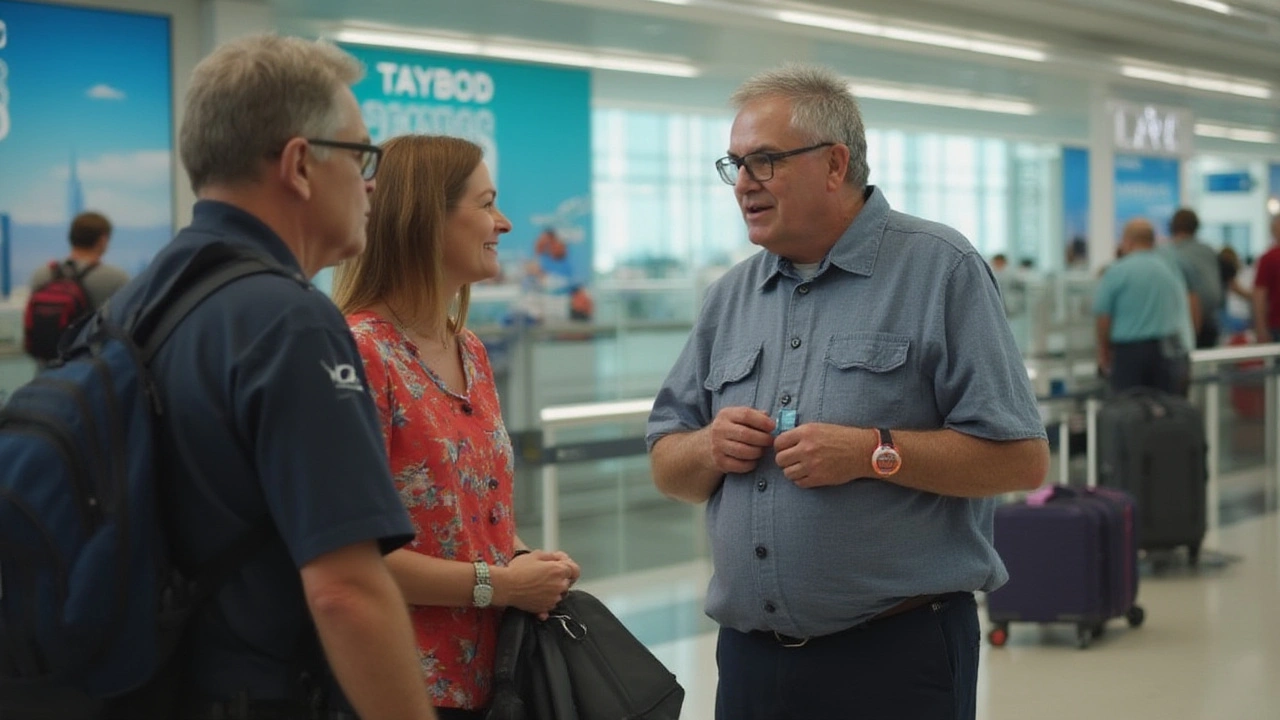
On the Road: Managing Angina During Your Travels
Daily routines can vanish on the road. That’s half the fun of travel, but it’s a big challenge if you need regular medication and stress management. Start your day with a check-in—how are you feeling? What’s the plan for today? It helps to share your health needs with travel companions. Trust me, Damian has the patience of a saint, but even he needs reminders about my do-not-disturb heart moments.
Plan your activities with plenty of downtime. Yes, there’s pressure to "see everything," but listen to your body. If you know climbing steep stairs is a trigger, look for alternatives, such as funiculars, taxis, or rideshares. Many city attractions—even ancient ruins and castles—offer accessible routes nowadays. If heat and humidity are triggers, get out early in the day and rest during the hottest hours. I carry a small, battery-powered fan and a water spritzer for dusty, sweltering afternoons. Lightweight, breathable clothing helps a lot more than you’d think.
Watch your meals, especially if local cuisine is delightfully salty or heavy. Try to stick to fresh fruits, salads, grilled proteins, and whole grains when possible. Hydrate more than you think you need, and skip those tempting sugary or caffeinated drinks. Alcohol is another sneaky culprit—it can interact with your medications, so stick to one glass or less.
Stick to your medication schedule as much as possible, even if you have to set alarms or leave dinner early. Time zone changes make this tricky, so write a quick schedule conversion before you go. Don’t be afraid to explain to restaurant staff if you need plain dishes or less salt—the vast majority will be happy to help, once they know why.
If you have an episode of angina while exploring, follow the same plan you would at home. Stop, rest, use your medication, and let someone know how you’re feeling. Don’t try to "tough it out." If symptoms don’t improve after using nitroglycerin, or if they get worse, seek local medical help. Memorize the international emergency number—112 works in most European countries, and 911 is universal in North America. If you’re traveling in places where language is a barrier, the Google Translate app’s emergency phrases option is a lifesaver.
It’s natural to worry about "ruining" a trip for your group if you need to slow down. But remember, your health comes first, and most journeys are made better with unexpected pauses (and stories you never planned for). Sometimes the best memories happen when you take a break and simply watch life go by.
Emergency Readiness: What If Something Goes Wrong?
No one likes thinking about worst-case scenarios, but being ready makes you brave, not paranoid. First, spot the difference between stable angina—which comes on with exertion and goes away with rest or meds—and signs of a potential heart attack. Here’s a quick reference:
| Sign | Angina | Heart Attack |
|---|---|---|
| Relief after rest/medication | Usually yes | No or minimal |
| Duration of pain | Less than 15 mins | Longer than 15 mins |
| Pain type | Predictable pattern | Sudden or severe |
| Other symptoms | Few, if any | Sweating, nausea, faintness, breathlessness |
If your angina doesn’t improve after two doses of nitroglycerin, or if symptoms get worse, act quickly. Tell someone nearby—hotel staff, fellow travelers, your guide. Show your medical card or translated note. Stay calm, sit down, and call emergency services. Most places have emergency responder apps or ambulance services you can call from your mobile phone, and many hotels have protocols for guests who get ill. If you’re in a remote area, contact the local embassy—they’re surprisingly helpful with medical guidance.
Always know where the nearest hospital is and how to get there. Public transit might be tricky during an emergency, so have the address and a local taxi number ready. Travel with a companion who knows the basics of your condition—what to do, what to say, and where to find your emergency information.
Don’t forget to report any emergency to your travel insurer as soon as possible; some companies even have dedicated helplines for urgent medical care. Save emails and phone numbers in multiple places.
It’s worth it to rehearse what you’ll say in an emergency. "I have angina. My chest pain isn’t going away after my medicine." These simple words can speed up care anywhere in the world. Many travelers report that local clinics are happy to provide care and translators if needed—you just have to ask.
The good news? Most people with stable angina travel without major problems, once they prep and stay honest with their limits.
Traveling with Angina: Stories, Hope, and Staying Adventurous
I once met a retired chemistry teacher in Seville who’d packed almost a pharmacy in her purse—"just in case." She ended up not needing any of it, but felt braver just by being ready. You don’t need to wrap yourself in bubble wrap. Travel is about finding joy in unpredictability, even if your health has a wild-card streak. Each little victory—the right snack, reaching the castle top by tram instead of stairs, the glass of water you remember to drink—adds up.
Sometimes, you’ll skip things. That’s okay. Every traveler with angina I’ve met has discovered creative hacks: learning "I have a heart condition" in five languages, using walking sticks as secret resting tools, picking hotels near public transit so you don’t get stranded. One trick I love—before sightseeing, Damian finds a shady park bench or quiet cafe nearby, so if I need to rest, we’re close. It beats toughing it out and missing the fun later.
If you’re worried your diagnosis means the end of big adventures, you’re not alone. Research from the British Heart Foundation in 2024 found most angina patients traveled safely and happily with just a little extra care. Knowing when to slow down is a superpower. And when things go wrong? Most fellow travelers, guides, and locals want to help—they just need to know how.
Remember, travel is not a time to ignore your body’s signals. It’s also not the time to lose sight of why you’re exploring in the first place. Curiosity, excitement, and a brave heart—those count for more than ticking every monument off a list.
So, say yes to the trip. Prep like a pro. Expect a few unexpected turns. And when you snap your photos or make your memories, know that you—and your sometimes finicky, always brave heart—earned every single one.
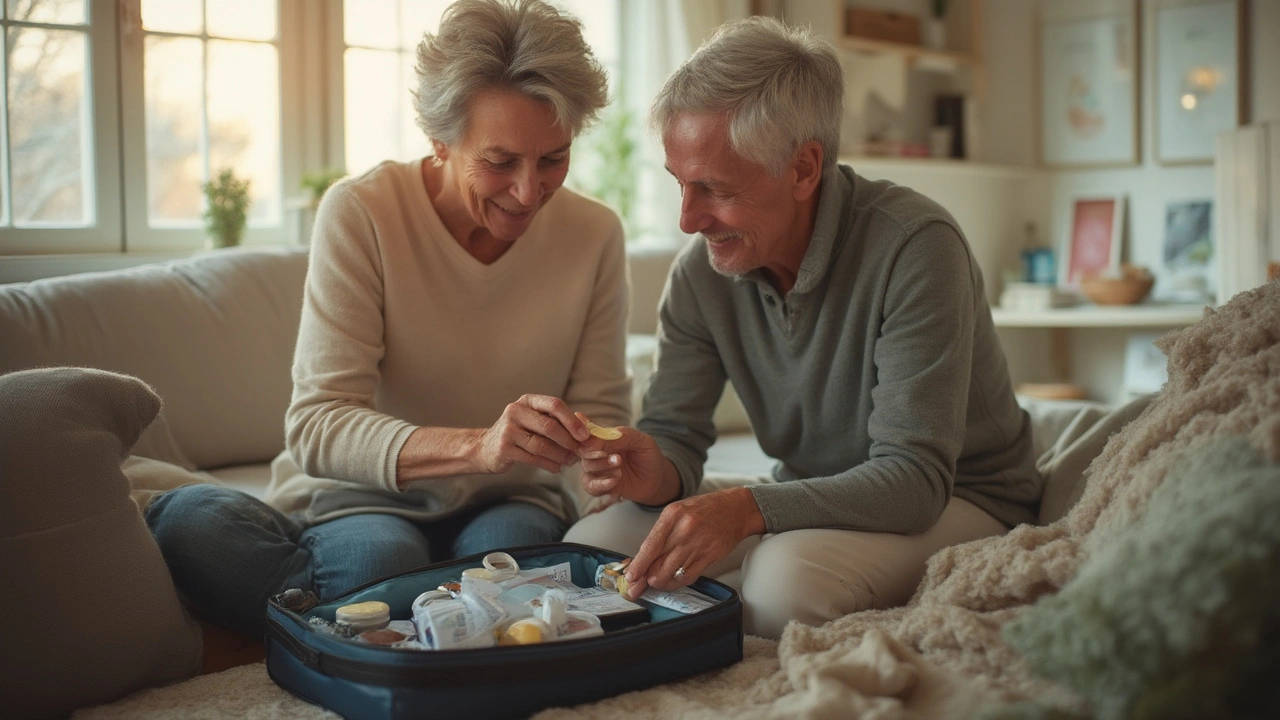

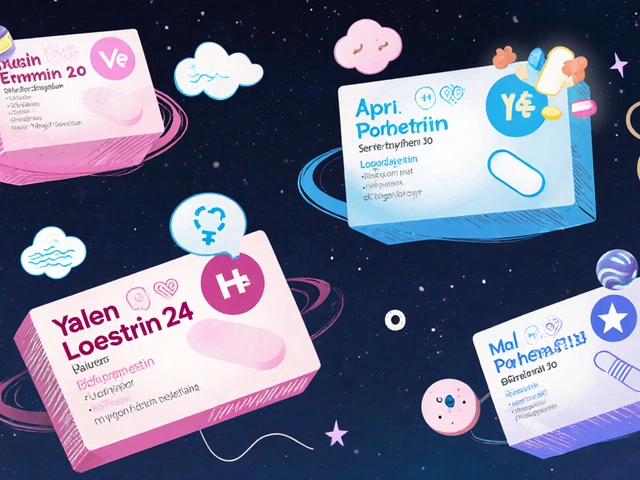
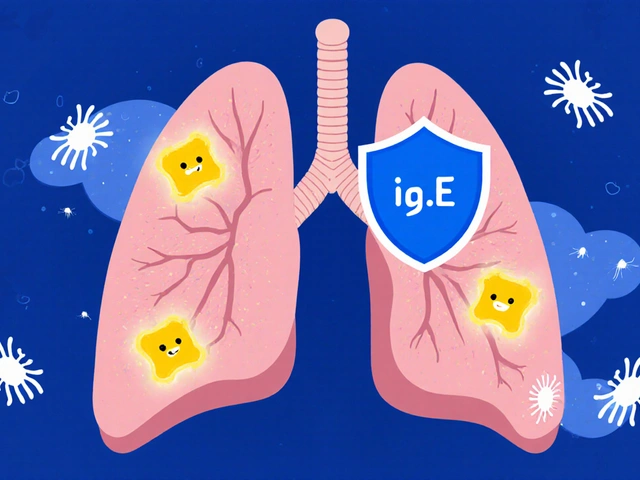

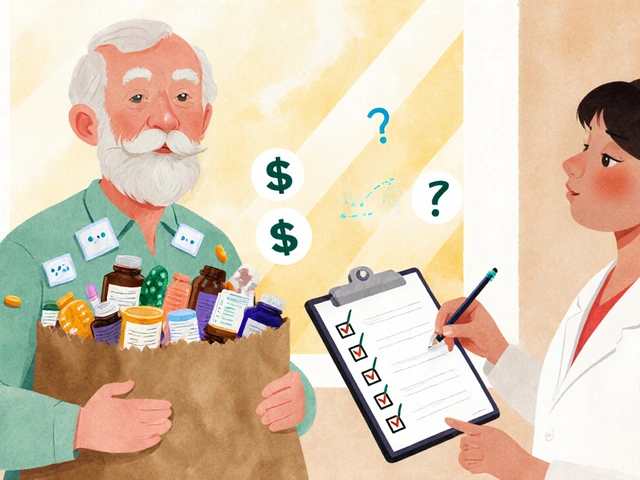
Steven Howell
22 July, 2025 . 23:07 PM
While the practical advice in this post is commendable, I must emphasize the critical importance of pre-travel cardiac optimization under the supervision of a cardiologist with expertise in travel medicine. The physiological stressors of altitude, circadian disruption, and environmental heat load are not trivial, particularly in individuals with fixed coronary stenosis. A formal exercise stress test with metabolic equivalent (MET) assessment is indispensable prior to any international itinerary involving physical exertion or high-altitude destinations. Furthermore, the pharmacokinetic alterations induced by hepatic enzyme induction from certain regional medications or dietary supplements may necessitate dose adjustments-this is rarely addressed in lay literature.
Robert Bashaw
24 July, 2025 . 08:37 AM
Angina on a plane? Buddy, that’s not a heart attack-it’s your ticker throwing a hissy fit in a metal tube 38,000 feet above the Atlantic, screaming, ‘I didn’t sign up for this!’ I’ve seen guys in cargo shorts and compression socks sobbing into their nitro spray like it’s the last sip of whiskey at a funeral. And don’t get me started on the guy who tried to ‘tough it out’ in Bali until he passed out in a temple gift shop. We’re not superheroes. We’re humans with plumbing issues and a deep-seated fear of being that guy who ruins the group selfie.
Brandy Johnson
25 July, 2025 . 05:49 AM
This article is dangerously naive. Traveling with angina is a privilege reserved for those who have adequate insurance, access to Western-standard hospitals, and the financial means to afford emergency evacuation. Most Americans who attempt this are either delusional or reckless. In countries where the nearest hospital lacks a cardiac cath lab, your ‘nitroglycerin spray’ is just a placebo wrapped in plastic. The real issue isn’t preparation-it’s the systemic failure of the U.S. healthcare system to provide adequate cardiac care domestically, forcing patients to gamble abroad.
Peter Axelberg
25 July, 2025 . 07:03 AM
I’ve been living with stable angina for seven years now and I’ve been to 23 countries. You don’t need to be a medical genius to travel-you just need to be organized. I pack my meds in a little waterproof pouch clipped to my belt loop, set three alarms a day, and I never, ever skip my afternoon nap. I learned the hard way after trying to hike Machu Picchu without resting and ending up in a Cusco clinic with a nurse who spoke zero English but somehow knew exactly what I needed. Pro tip: Learn the phrase ‘My chest hurts’ in the local language. It’s worth more than any guidebook. And yes, I’ve used my nitro spray in a taxi in Istanbul, a bus station in Bangkok, and once, embarrassingly, in front of a street vendor selling grilled octopus. Nobody judged. Everyone just handed me water.
Monica Lindsey
26 July, 2025 . 17:37 PM
Preparation is not ‘being paranoid.’ It’s basic responsibility. If you can’t manage your own health on vacation, you shouldn’t be traveling at all. This post romanticizes irresponsibility under the guise of empowerment. Your heart doesn’t care about your bucket list.
jamie sigler
26 July, 2025 . 19:17 PM
I get that this is supposed to be helpful, but honestly? It just makes me feel worse. Like I’m supposed to be grateful for a list of things I can’t do anymore. I used to backpack through Europe. Now I can’t even walk to the mailbox without needing to sit down. And nobody talks about how lonely it is to watch everyone else have adventures while you’re Googling ‘best hotels with elevators in Kyoto’ at 2 a.m.
Bernie Terrien
28 July, 2025 . 18:50 PM
This is peak wellness culture nonsense. Nitro spray? Travel insurance? Please. The real issue is that modern medicine has turned a natural physiological response into a life sentence of fear. Angina isn’t a crisis-it’s a signal. Stop medicating your way through life and start asking why your heart is screaming in the first place. Maybe your diet, your stress, your 12-hour workdays… maybe it’s not the altitude. Maybe it’s your life.
Jennifer Wang
28 July, 2025 . 20:20 PM
As a clinical nurse specialist in cardiac rehabilitation, I applaud the comprehensive nature of this guide. However, I would strongly recommend supplementing this with a formal pre-travel risk stratification using the Revised Cardiac Risk Index (RCRI) and consideration of non-invasive imaging if not recently performed. Additionally, the recommendation to carry double the medication supply is prudent, but patients must be counseled on proper storage conditions-heat degradation of nitroglycerin is a documented phenomenon. Finally, while digital translations are useful, a laminated, physician-signed medical alert card in the local language remains the gold standard for emergency communication abroad.
stephen idiado
29 July, 2025 . 02:16 AM
Western-centric medical colonialism at its finest. You assume universal access to nitroglycerin, English-speaking medics, and insurance. In Lagos, your ‘doctor’s letter’ is toilet paper. Your ‘travel insurance’ is a fantasy. Your ‘precautions’ are irrelevant when the nearest ECG machine is 200km away and your ‘companion’ is your cousin who thinks ‘heart attack’ means ‘too much pepper soup.’ This isn’t empowerment-it’s privilege disguised as advice.
Subhash Singh
29 July, 2025 . 09:04 AM
While the article provides a commendable framework for travel safety, I am curious about the physiological implications of circadian misalignment on myocardial oxygen demand in patients with stable angina. Specifically, does the disruption of melatonin rhythms and sympathetic tone during rapid transmeridian travel exacerbate endothelial dysfunction or platelet aggregation? Furthermore, are there any peer-reviewed studies correlating time-zone transitions with angina frequency, particularly in patients on beta-blockers with prolonged half-lives? A systematic review on this topic would be of immense clinical value.
Geoff Heredia
30 July, 2025 . 23:02 PM
Did you know that the FAA quietly bans people with angina from flying unless they’ve signed a waiver? And that the cabin pressure in commercial jets is deliberately kept at 8,000 feet to save airlines money? They don’t tell you this. Your nitro spray? It’s just a placebo. The real danger is the microplastics in the recycled air-your heart is suffocating from plastic particles, not lack of oxygen. And don’t get me started on the 5G towers at airports-they interfere with pacemakers and stents. You think you’re prepared? You’re just a pawn in a global health cover-up.
Tina Dinh
31 July, 2025 . 23:47 PM
YESSSS this is everything!!! 💖🫶 I just got back from Kyoto and used ALL the tips-meds in my fanny pack, water bottle glued to my hand, and I even brought my own low-sodium onigiri 😌✨ My heart was like, ‘okay fine, we can do this’ and we had the BEST time! You don’t have to cancel your dreams-you just have to pack smarter. And if you need a nap? NAP. No guilt. You’re not lazy-you’re a cardiac warrior. 🏆❤️
Andrew Keh
2 August, 2025 . 00:31 AM
This is a thoughtful and well-researched guide. I appreciate the balance between practical advice and emotional encouragement. Many people with heart conditions feel isolated, and this article reminds them that they can still experience the world with care and awareness. Thank you for writing it.